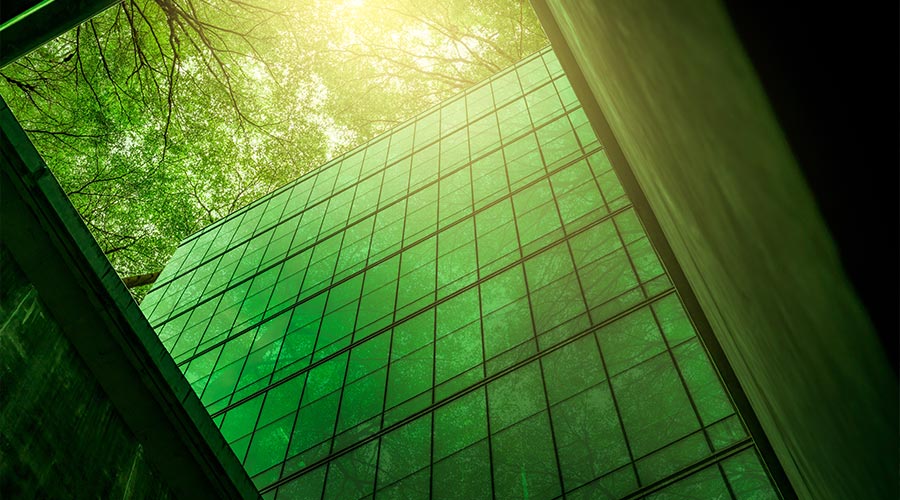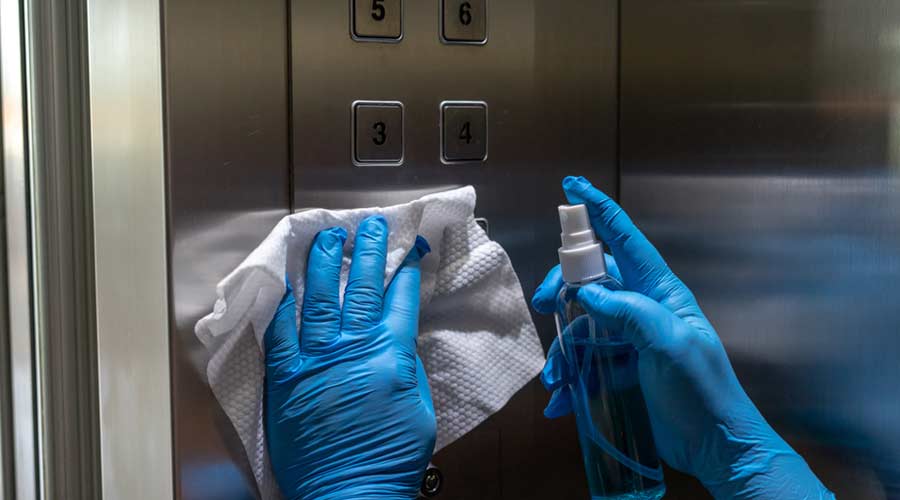
According to Schneringer, one of the biggest changes in LEED v5 is the increased emphasis on indoor air quality (IAQ) performance and monitoring.
“Distributors would do well to understand that the products and procedures they recommend can contribute in a positive way to air quality,” he says.
Facility Stewardship Performance is a new v5 credit under environmental quality (EQ) that is relevant to the cleaning industry. Distributors should pay close attention to cleaning performance (worth 1 point). This can be achieved by using APPA guidelines for a facility appearance audit (referenced in previous LEED versions) or by using an ATP test to measure the cleanliness of surfaces — a new pathway in v5.
“Not only can a distributor sales rep sell test equipment, but they can offer a service to come in and do the measurements for their customer,” says Ashkin. “And I bet 99 percent of the time, the test will indicate that they need to do more cleaning, not less. Think of the implications of that: If people need to clean more, they’re going to buy more chemicals, vacuum cleaners, garbage bags — increasing demand.”
In addition to housing the Facility Stewardship Performance credit, the EQ section contains the green cleaning credit, which has two pathways worth one point each.
“Option one is for using a certified green cleaning service. This option was previously embedded in our green cleaning policy,” Oaks explains. “The other option is focused on the green cleaning products and materials. This one looks very familiar to what we had in the past, but it’s nested under this green cleaning credit.”
The Green Cleaning credit continues to require that at least 75 percent of all cleaning materials and products by cost must meet at least one of the standards mentioned in the credit through three months of purchases. The credit also continues to reward the use of the U.S. Environmental Protection Agency’s (EPA) Safer Choice Standard for cleaning and degreasing products. What is new in v5 is the recognition of aqueous ozone technology to generate cleaning products on site.
Other noteworthy changes in the v5 Green Cleaning credit include:
· The addition of EPA’s Design for the Environment logo for disinfectants.
· The inclusion of Ultraviolet-C (UV-C) disinfecting devices.
· 40 percent post-consumer recycled content for paper and plastic trash liners. (Up from 30 percent in v4.)
Distributors as Leaders
To date, 78,000-plus buildings in the United States are LEED-certified, and many more are following the LEED roadmap for green cleaning. Ashkin shares that while some credits are difficult and/or expensive to pursue, cleaning credits are not — which is why 95 percent of all projects achieve the cleaning-related credits. For distributors, this is a huge opportunity to differentiate their business and give them a competitive advantage.
“The value for a salesperson becoming familiar with LEED is to be able to say to the customer, ‘I can teach you something. I can make this easier for you. I can tell you what the changes are,’” says Ashkin. “The more a sales rep can help their customers, the more valuable they become.”
To this end, BradyPLUS offers its Green Partner Support (GPS) Program for facilities implementing sustainable practices, including pursuing LEED certification. In addition to helping customers write green cleaning policies and calculate their green spend, the distributor aids with designing recycling and waste diversion programs as well as training staff on equipment and chemical changes relevant to LEED certification. The company also has LEED-accredited professionals (LEED APs) on staff, including Schneringer, with advanced knowledge of the LEED certification system.
Oaks encourages distributors who are looking to increase their knowledge of LEED and the updates to visit USGBC’s webpage dedicated to v5 (LEED v5 | U.S. Green Building Council). The website includes a free reference guide with overviews of each prerequisite and credit, allowing distributors to quickly access the sections that address cleaning practices.
Furthermore, Ashkin and Adkins are hosting a series of webinars covering the LEED v5 updates and their impact on the cleaning industry.
While distributors don’t need to know every detail of LEED, they should be able to demonstrate expertise on cleaning issues. Fortunately, LEED v5 is designed with ease-of-use in mind, making it simpler for distributors to partner with clients as they navigate and implement changes to improve working conditions and the health of building occupants.
Kassandra Kania is a freelance writer based in Charlotte, North Carolina, and is a frequent contributor to Sanitary Maintenance.
What Jan/San Distributors Must Know About USGBC’s LEED v5

 Celebrating BSCAI's 60th Anniversary eBook
Celebrating BSCAI's 60th Anniversary eBook The Down and Dirty on Cleaning in Virus Season
The Down and Dirty on Cleaning in Virus Season How Surfactant Use is Expanding in Commercial Cleaning
How Surfactant Use is Expanding in Commercial Cleaning